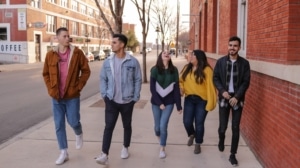
The new year brought good news for foster youth. On December 27, Congress passed the Consolidated Appropriation Act which included important pandemic relief for older youth in foster care.
John Burton Advocates for Youth (JBAY) advocated for this important funding as part of a large national coalition led by Philadelphia-based Juvenile Law Center.
The appropriations bill included $400 million in one-time funding for older youth in foster care. Of that total, California is expected to receive approximately $44 million.
JBAY is developing recommendations for elected officials about how California can best spend the newly available funding, together with fellow advocates from across the state. JBAY’s top priority is that the funding go directly to youth within 45 days, who we know are struggling with employment and housing during the pandemic.
According to JBAY Executive Director Amy Lemley, many foster youth are hanging on by a thread. “We’re in the tenth month of the pandemic. During this time, youth have done everything in their power stay afloat, going into debt and resorting to increasingly desperate measures,” said Lemley. “The effect of the pandemic is cumulative; we need to get this financial relief to young people as soon as possible.”
JBAY is also recommending that the funding is used to help young people who are on the wait list for the Chafee Education and Training Voucher (ETV), which provides up to $5,000 to current and former foster youth enrolled in post-secondary education, including career and technical education. There are currently over 1,600 foster youth who qualify but do not receive the Chafee ETV due to inadequate funds. The newly available funding would ensure these young people are able to stay enrolled in college.
Finally, JBAY is advocating that the funding helps the approximately 5,000 youth who will exit foster care in January 2021. The California State Legislature authorized youth to remain in foster care after age 21 until June 30, 2021 and Governor Newsom has proposed extending that date to January 2022. With the newly available federal funding, California can ensure these young people make a safe, supported transition during what will likely be a fragile, recovering economy and housing market.
